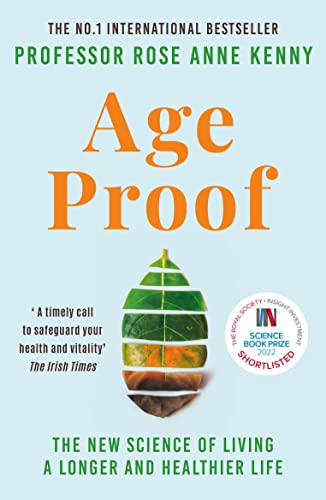Please read this informative book:

- Every one of us carries about 2 meters of DNA, in every single cell, and we have 30 trillion cells. DNA consists of 23 pairs of chromosomes, each made up of 3 billion ‘letters’ of genetic information.”
- Page 20: “Older adults with negative attitudes about aging live 7.5 years less than those with positive attitudes, mostly because of higher rates of heart disease.”
- Page 21: “How we perceive ourselves as aging is quite literally a matter of life or death.”
- Page 27: “a quote from Aristotle; true happiness came only from achieving a life of meaning, of doing what was worth doing.
- Page 31: “How we perceive ourselves influences the biological pace of aging.”
- Page 31: “The more optimistic and positive our perceptions, the more likely we will live longer, healthier and happy lives.”
- Page 34: “Subsequent research has established that having a purpose of life makes us happier, healthier and, amazingly, can add up to 7 years of extra life.”
- Page 39: ” An individual’s walking speed is a strong predictor of healthy longevity.”
- Page 43: “We have between 20,000 and 25,000 genes.”
- Page 46: “Unlike normal cells, cancer cells do not undergo programmed cell death, but continue to multiply without end.”
- Page 47: “Proteins that function as recycling trucks to take the waste and toxins from within cells to recycling centers in the cell and beyond ….”
- Page 71: “Both human and rat brains have the capacity to form new brain cells, new blood vessels and new communication bridges between brain cells throughout life, all of which constitute brain reserve.”
- Page 85: “We spend on average 26 and a half years of our lives asleep.”
- Page 87: “Deep sleep is the most physiologically profound stage of sleep. When we enter this stage of sleep, our body releases human growth hormone. A powerful substance that plays a vital role in the repair of both body and brain cells.”
- Page 92: “Killer T attack viruses —- by getting indirect contact with them, sticking to them and destroying them.”
- Page 98: “Every cell has an internal clock that drives its circadian rhythm, which is synchonised to all other cells.
- Page 98: “The suprachiasmic nucleus is our master clock and it organises the clocks in every other cell in our body for efficiency.”
- Page 102: “Email checking is the most striking effect, reducing sleep by one hour if exposure goes from one hour to four hours.”
- Page 108: “this is backed up by research showing correlations between high smart phone and internet use and poor cognitive skills, such as concentration, memory and learning.”
- Page 122: “…meditation has been shown to preserve grey and white matter.
- Page 122: “The mitochondria, present in every cell in the brain and body, produces 90 percent of the cell’s energy.”
- Page 130: “But even with this notable statistic, an estimated 10-30 million distinguishable species currently inhabit the earth.”
- Page 131: “…biologists can study genes relevant to ageing in the housefly and apply research findings to human studies because the genes are the same in both species.”
- Page 132: “For example, it takes 10,000 human cells to cover a pin head and our bodies are made up of trillions of cells.”
- Page 152: “The big issue with this is that with obesity comes accelerated aging and early representation of diseases- sometimes as much as 20 years earlier.. examples.
- Page 157: “Diet and body weight hold the key to many of the switches and are a major factor in turning on or off components of cell aging.”
- Page 161: “Ketones are chemicals that breakdown fat.”
- Page 165: “Caloric restriction triggers release from fat cells of the protean adiponectin which helps to guard against heart disease and high blood pressure.”
- Page 171: “… fish is considered one of the most heart-healthy foods you can eat.”
- Page 172: “As evidence that fish is good for the brain, people who eat fish regularly have more grey matter in the brain centers that control memory and emotion and better memory results.”
- Page 174: ” Daily doses of vitamin D up to 4000 IU are safe.”
- Page 176: “… eight chemical forms of vitamin E are present in foods.”
Enjoy! Best wishes, Dr Mac and staff
